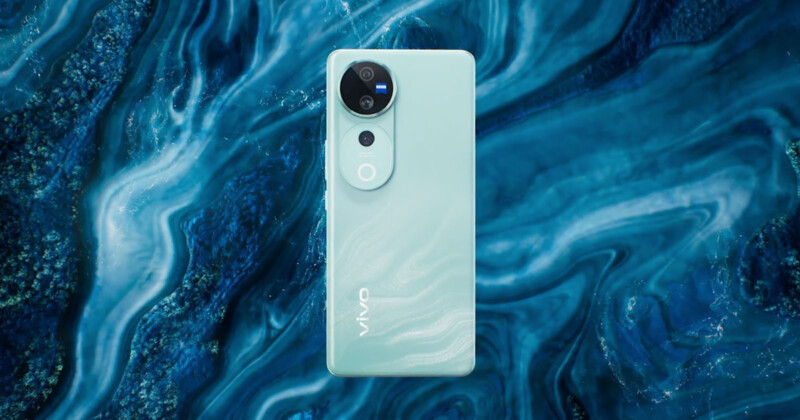Vivo’s New V40 and V40 Pro Smartphones Promise Big Photo Features at a Small Price
![]()
Smartphone maker Vivo, celebrated for incorporating high-end photography features into mid-range handhelds, has announced the V40 and V40 Pro. The two new phones include Zeiss photo technology and various camera upgrades.
The Vivo V40 and V40 Pro share quite a few features, including their overall design. Both devices have the same 6.78-inch AMOLED display with a 120Hz refresh rate and 2,800 x 1,260 pixels resolution. This display can reach 4,500 nits of brightness in certain situations. The first interesting camera feature comes on the front of the new phones, as they each have a hole punch near the top of the display for a 50-megapixel Samsung ISOCELL JN1 image sensor. It has a 21mm-equivalent focal length and f/2 aperture. This Type 1/2.76 sensor can shoot 4K/30p video.
Differences start to appear on the back of the devices. The Vivo V40 and V40 Pro each have the same main and ultra-wide cameras, but the Pro version adds a telephoto camera.
![]()
The main camera sports a 50-megapixel Sony IMX921 sensor with a 24mm equivalent f/1.9 lens. This sensor is a Type 1/1.56, which is fairly large. The 50-megapixel ultra-wide camera has a smaller sensor (Type 1/2.76) and a 15mm f/2 lens that delivers a 119-degree field of view.
![]()
The V40 Pro adds a third camera to the mix, a 50-megapixel telephoto camera. This camera, equipped with a Sony IMX816 sensor (Type 1/2.51) and 50mm equivalent f/1.9 lens, is used for the Zeiss Multifocal Portrait Mode introduced in the Vivo X Fold3 Pro released earlier this year.
![]()
Although that smartphone used a different image sensor, the premise is the same here. The V40 Pro has been optimized for telephoto portrait photography, including simulated bokeh styles based on legendary Zeiss lenses, like Distagon, B-Speed, Biotar, Sonnar, Planar, and Cine-Flare series glass.

Both smartphones also include the Aura Light seen on some prior Vivo smartphones, which helps add a bit of flattering fil light to portraits, and, of course, the camera lenses also sport Zeiss optical technology as part of the ongoing relationship between Vivo and Zeiss. The phones themselves are “co-engineered with Zeiss,” and photo features are the primary marketing topic for Vivo, emphasizing how important the photo features are to the company.
![]()


There are additional improvements inside the new phones. The V40 has the same Snapdragon 7 Gen 3 chip as the V30, while the V40 Pro upgrades to a Dimensity 9200+ chip, finally moving on from the Dimensity 8200 that powered the previous three V Pro-series handhelds. Both new phones get bigger 5,500 mAh batteries, the largest to date in the series.

So far, the Vivo V40 and V40 Pro have only been announced in India, although they will be coming to other markets soon. The V40 starts at 39,999 rupees, around $476, while the V40 Pro is 54,999 rupees ($655). In either case, there are some impressive camera features for the price.
Image credits: Vivo